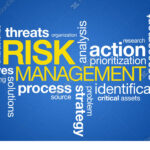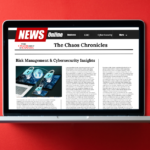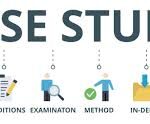Executive Summary
In the rapidly evolving landscape of technology, effective IT management and governance are crucial for organizations to achieve their strategic objectives, mitigate risks, and ensure compliance with regulatory requirements. This white paper explores the essential components of an IT management and governance framework, offering insights into best practices, challenges, and the role of governance in aligning IT with business goals.
Introduction
Information Technology (IT) has become the backbone of modern organizations, enabling innovation, improving efficiency, and driving competitive advantage. However, the complexity and rapid pace of technological change pose significant challenges to IT management. Organizations need a robust framework to ensure that IT resources are used effectively and align with overall business objectives. This white paper provides a comprehensive overview of IT management and governance frameworks, their importance, and how they can be effectively implemented.
The Importance of IT Management & Governance
- Strategic Alignment:
- Driving Business Success: IT governance ensures that IT initiatives are directly tied to the organization’s strategic goals, enabling technology investments to drive business success rather than just supporting it.
- Prioritization of IT Projects: It helps in prioritizing IT projects that have the greatest impact on the organization’s objectives, ensuring that resources are focused on high-value initiatives.
- Risk Management:
- Proactive Risk Identification: Implementing a governance framework allows organizations to proactively identify risks related to IT operations, such as data breaches, downtime, or compliance failures, and address them before they become critical.
- Risk Mitigation Strategies: It includes developing and implementing comprehensive risk mitigation strategies, such as disaster recovery planning, cybersecurity measures, and regular risk assessments.
- Resource Optimization:
- Efficient Use of Resources: Governance frameworks ensure that IT resources—including budgets, personnel, and infrastructure—are allocated and used efficiently, avoiding waste and ensuring maximum return on investment.
- Capacity Planning: Effective governance includes planning for future resource needs, ensuring that the IT department is prepared to scale as the organization grows.
- Regulatory Compliance:
- Adherence to Laws and Standards: IT governance helps organizations ensure that their IT practices comply with relevant regulations and standards, such as GDPR, HIPAA, or ISO 27001, avoiding legal penalties and reputational damage.
- Continuous Monitoring: It involves the continuous monitoring of compliance requirements and adapting to changes in laws and regulations to maintain compliance over time.
- Performance Measurement:
- Setting Clear Metrics: Governance frameworks establish clear metrics and KPIs for measuring the performance of IT services and initiatives, enabling organizations to track progress and make data-driven decisions.
- Performance Reviews: Regular performance reviews ensure that IT services are meeting business needs and delivering value, with adjustments made as necessary to improve outcomes.
Key Components of an IT Management & Governance Framework
- Governance Structures
- IT Steering Committee:
- Role in Decision-Making: The IT Steering Committee is a high-level group typically composed of senior executives and IT leaders. It plays a critical role in making strategic IT decisions, ensuring that IT initiatives are aligned with business objectives, and prioritizing projects based on their value to the organization.
- Oversight and Accountability: This committee also provides oversight, ensuring accountability for IT project outcomes and resource utilization.
- Roles & Responsibilities:
- Clear Definition: Clearly defining roles and responsibilities within the IT governance framework is essential for avoiding confusion and ensuring that everyone understands their duties.
- Accountability Structures: Establishing accountability structures, where each role has a specific set of responsibilities and is held accountable for their outcomes, is crucial for the success of the framework.
- IT Steering Committee:
- IT Strategy Development
- Business-IT Alignment:
- Understanding Business Goals: Business-IT alignment involves understanding the organization’s strategic goals and ensuring that the IT strategy supports these objectives.
- Collaborative Planning: It requires close collaboration between IT and business leaders to develop IT initiatives that directly contribute to business success, such as digital transformation projects or customer experience enhancements.
- Strategic IT Planning:
- Long-Term Vision: Strategic IT planning involves developing a long-term vision for the organization’s IT landscape, including the adoption of new technologies, infrastructure upgrades, and process improvements.
- Roadmap Development: This planning process typically results in a roadmap that outlines key initiatives, timelines, and resource requirements, ensuring that IT efforts are focused and coordinated.
- Business-IT Alignment:
- Risk Management
- Risk Assessment:
- Identification and Analysis: Risk assessment involves systematically identifying potential risks to IT operations, including cybersecurity threats, data privacy issues, and operational disruptions.
- Risk Prioritization: Once risks are identified, they are analyzed and prioritized based on their potential impact and likelihood, allowing the organization to focus on the most critical risks.
- Security Management:
- Comprehensive Security Strategies: Security management within the IT governance framework includes the development and implementation of comprehensive security strategies to protect IT assets, such as data encryption, network security, and access controls.
- Incident Response Plans: It also involves creating and regularly updating incident response plans to ensure that the organization can quickly and effectively respond to security breaches or other IT-related incidents.
- Risk Assessment:
- IT Service Management (ITSM)
- ITIL Framework:
- Adoption of Best Practices: The ITIL (Information Technology Infrastructure Library) framework provides a set of best practices for IT service management, focusing on delivering IT services that meet the needs of the business and its customers.
- Service Lifecycle Management: ITIL emphasizes managing the entire service lifecycle, from service design and transition to operation and continuous improvement.
- Service Level Agreements (SLAs):
- Defining Expectations: SLAs are formal agreements between IT and the business that define the expected levels of service, including performance metrics, response times, and availability.
- Monitoring and Enforcement: Regular monitoring of SLA compliance is essential, and mechanisms should be in place to address any service level breaches, ensuring that IT services consistently meet business expectations.
- ITIL Framework:
- Performance Management
- Key Performance Indicators (KPIs):
- Setting Measurable Goals: KPIs are specific, measurable metrics used to evaluate the performance of IT services and initiatives. These might include uptime, system response times, project completion rates, and user satisfaction scores.
- Continuous Tracking: Regularly tracking KPIs allows the organization to identify areas for improvement, celebrate successes, and make informed decisions about future IT investments.
- Continuous Improvement:
- Feedback Loops: Continuous improvement involves establishing feedback loops where performance data is regularly reviewed, and insights are used to make iterative improvements to IT processes and services.
- Innovation and Adaptation: It encourages a culture of innovation and adaptation, ensuring that IT remains responsive to changing business needs and technological advancements.
- Key Performance Indicators (KPIs):
- Compliance and Audit
- Regulatory Compliance:
- Adherence to Standards: Ensuring regulatory compliance involves implementing processes and controls that adhere to relevant laws, regulations, and industry standards, such as data protection laws, financial regulations, and industry-specific standards like ISO 27001.
- Documentation and Reporting: It also requires maintaining thorough documentation and reporting mechanisms to demonstrate compliance and support audits.
- Internal & External Audits:
- Regular Auditing Practices: Regular internal and external audits are essential to ensure that the IT governance framework is being followed and that IT operations comply with established policies and standards.
- Audit Follow-Up: Following up on audit findings with corrective actions is crucial for addressing any identified weaknesses or gaps in the governance framework.
- Regulatory Compliance:
Implementation Challenges
- Cultural Resistance:
- Change Management: Introducing a governance framework often requires significant changes in how IT and business operations are conducted. Overcoming cultural resistance requires effective change management strategies, including clear communication, stakeholder engagement, and addressing concerns proactively.
- Building Buy-In: Gaining buy-in from all levels of the organization, particularly from senior leadership, is critical for overcoming resistance and ensuring successful implementation.
- Resource Constraints:
- Budget Limitations: Implementing and maintaining a governance framework can be resource-intensive. Organizations with limited budgets may struggle to allocate sufficient financial and human resources to support governance activities.
- Prioritization of Resources: Effective resource management, including prioritizing high-impact governance activities and leveraging existing tools and processes, can help mitigate resource constraints.
- Complexity of IT Environment:
- Integration Challenges: Modern IT environments are often complex, with a mix of legacy systems, cloud services, and emerging technologies. Integrating governance practices across such diverse environments can be challenging.
- Tailored Solutions: Organizations may need to develop tailored governance solutions that address the unique complexities of their IT landscape, including specific policies, procedures, and tools.
- Rapid Technological Changes:
- Keeping Up with Innovation: The fast pace of technological change requires organizations to continually adapt their governance frameworks to address new challenges and opportunities, such as those posed by cloud computing, artificial intelligence, and the Internet of Things (IoT).
- Agile Governance Models: Adopting agile governance models that allow for flexibility and rapid adaptation can help organizations stay ahead of technological changes and maintain effective governance.
Best Practices for Effective IT Management & Governance
- Leadership Commitment:
- Top-Down Support: Successful IT governance requires strong commitment from senior leadership, including the CEO, CIO, and board of directors. This commitment should be reflected in the organization’s strategic priorities and resource allocation.
- Championing Governance Initiatives: Leadership should actively champion governance initiatives, ensuring that they are seen as integral to the organization’s success rather than as a bureaucratic requirement.
- Clear Communication:
- Transparency and Engagement: Clear communication about the purpose, benefits, and processes of IT governance is essential for gaining buy-in across the organization. This includes regular updates, training sessions, and open forums for discussion.
- Alignment of Expectations: Ensuring that all stakeholders have a clear understanding of their roles and responsibilities within the governance framework helps to align expectations and minimize confusion or conflict.
- Regular Reviews:
- Continuous Evaluation: The governance framework should be regularly reviewed to assess its effectiveness and relevance. This includes evaluating governance structures, processes, and metrics to ensure they continue to meet the organization’s needs.
- Adaptation to Change: Reviews should also consider changes in the business environment, technology landscape, and regulatory requirements, with the framework adapted as necessary to address these changes.
- Training & Education:
- Building Competency: Ongoing training and education for IT staff, business leaders, and other stakeholders are essential for building the competency required to effectively implement and sustain IT governance.
- Fostering a Governance Culture: Training should also focus on fostering a culture of governance within the organization, where all employees understand the importance of governance and their role in maintaining it.
Conclusion
An effective IT management and governance framework is essential for organizations to achieve their strategic goals, manage risks, and ensure compliance with regulatory requirements. By aligning IT with business objectives, optimizing resources, and implementing robust risk management and compliance measures, organizations can enhance their overall performance and competitive advantage.
References
- IT Governance Institute. (2021). COBIT 2019 Framework: Introduction & Methodology. ITGI.
- ISACA. (2020). CISA Review Manual. ISACA.
- ITIL Foundation. (2019). ITIL 4 Foundation. AXELOS Limited.
- ISO/IEC. (2013). ISO/IEC 27001: Information Security Management Systems. ISO.









